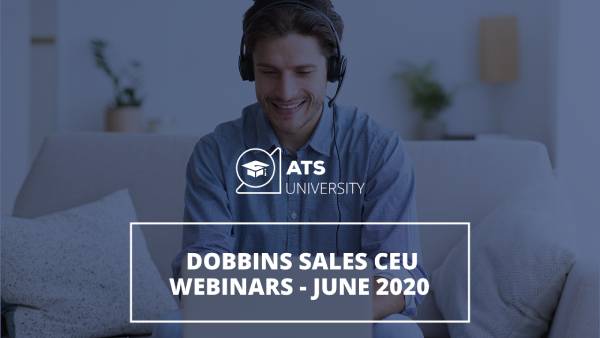In June, ATS University hosted 3 CEU webinars with Dobbin Sales for the architectural, design, and sustainable building communities. Read the recap and watch or rewatch the recordings on the webinars, here on ATS University. ATS University is your resource for industry information on the latest products and manufacturers.
June’s Webinars:
- The Art of Water: Solving water delivery challenges w/ Bottle Filling Stations by Elkay held on June, 24th
- Specifying plumbing fixtures for K-12 and Higher Education Facilities by Sloan held on June, 17th
- Electronic Sensor Faucets Improve Hygiene and Conserve Water in Commercial Restrooms by Sloan held on June, 10th
The Art of water: Solving water delivery challenges w/ Bottle Filling Stations by Elkay
In the pursuit of increasing sustainability efforts for a positive impact on the environment, more bottle filling stations are being put into building design specifications. Learn how bottle filling stations help to conserve energy while encouraging the use of reusable bottles to minimize disposable plastic bottle waste in the environment.
One of the main reasons people buy bottled water is due to concerns about lead content in their water supply. However, 22% of bottled water brands have been found to contain harmful chemicals and often don’t have the regulations municipalities have to ensure clean, safe water. People often justify the purchase of plastic bottles because they believe they can be recycled, but over 80% of water bottles are not recycled, and the rest that are, can only be used for non-food based applications.
What can be done?
Fill reusable water bottle for free
Advocate for public water fountains
Options:
- Traditional water fountains: the issues here are that filling a water bottle is difficult and no one wants to place mouth near the bubbler.
- Bottle fillers: fill water 3x faster, clean, hygienic. With senors it offers touch-free capabilities.
- Outdoor units: many come with freeze valves for colder climates and low valves for dogs.
Specifying plumbing fixtures for K-12 and Higher Education Facilities by Sloan
This course covers factors that influence commercial restroom design for K-12 and higher education facilities, the specification process, product preference for new construction vs. retrofits, ADA compliance, water conservation, and sustainability efforts.
Electronic Sensor Faucets Improve Hygiene and Conserve Water in Commercial Restrooms by Sloan
Explore the impact of electronic sensor faucets on hygiene and water conservation through existing technologies, options, and settings. Includes specific markets and applications, as well as regulatory compliance factors.
To Request a CEU for your organization, submit your email below.
Share this article

